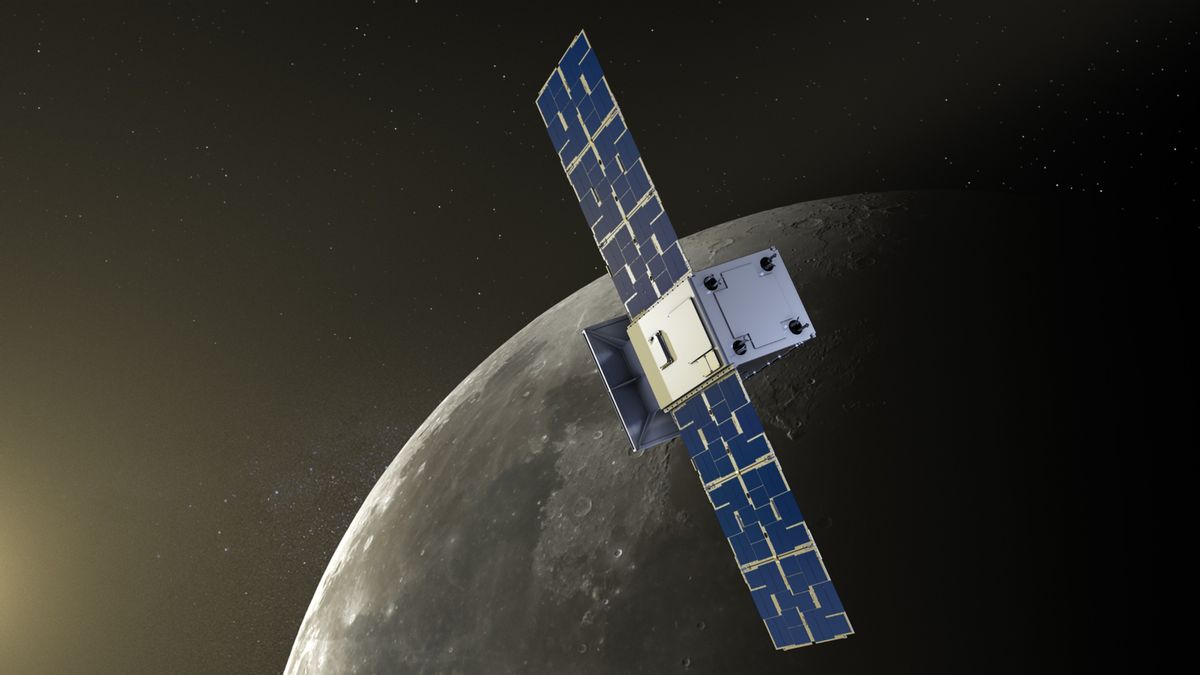JAKARTA - On Wednesday morning, July 6, NASA announced that their team had re-established contact with CAPTONE. NASA was having trouble establishing contact with the new CAPSTONE spacecraft, a small probe that just launched from Earth to test a new orbit around the Moon.
Because of these communication problems, NASA had to postpone planned vehicle maneuvers that would help improve its path into space. NASA is also still trying to re-establish contact.
CAPSTONE is the first mission of NASA's Artemis program, which is the agency's attempt to send humans back to the Moon. As part of this program, NASA plans to build a new space station in lunar orbit.
But the orbit that NASA wants to use this time is a unique orbit. This orbit is a very elongated path that has never been used by a spacecraft before.
CAPSTONE is intended to be a pathfinding mission, as the spacecraft inserts itself into that orbit and gives NASA some operational experience before the agency begins building its new station.
A satellite only the size of a microwave oven, CAPSTONE was launched from New Zealand on June 28 aboard a small Electron rocket operated by aerospace company Rocket Lab. To give CAPSTONE an extra boost to the Moon, Rocket Lab uses a special booster called Photon, which remains attached to the satellite after its initial launch and periodically raises the satellite's orbit.
CAPSTONE finally detached from Photon on July 4, and in the first 11 hours after separation, it appeared to be functioning properly, according to Advanced Space, which manufactures and operates the spacecraft. CAPSTONE deployed its solar panels and started charging its onboard battery.
The mission team was able to point CAPSTONE to Earth and establish communication with one of the dishes on NASA's Deep Space Network, a series of ground-based telescopes around the world that the agency uses to communicate with spacecraft headed into space.
CAPSTONE was able to contact one of the telescopes in Madrid, Spain, allowing the team to begin examining the satellite and preparing the vehicle for the upcoming maneuver to change its course, which is planned for July 5.
However, according to NASA, the spacecraft began experiencing communication problems when it came into contact with another telescope on the Deep Space Network — this one in Goldstone, California. Advanced Space calls the source of the problem an "anomaly" in the communications subsystem.
As a result, the July 5 maneuver has been postponed while the team attempts to reestablish contact with the spacecraft. The maneuver is intended to be the first in a series of planned adjustments CAPSTONE will undertake on its voyage to the Moon.
In the end, Advanced Space said that CAPSTONE could handle the delay. The spacecraft ended up taking a very long route to get to the Moon, which would take about four months to complete.
This is a very fuel efficient route but also time consuming. Advanced Space said the route also gave the team time to understand the problem and find a solution before resuming the maneuver.
When CAPSTONE makes contact, the mission team can determine the spacecraft's position and speed in space. Currently, CAPSTONE is about 177,000 miles (285,000 kilometers) from Earth.
NASA Engineers can also stabilize the spacecraft, and they have done all they can to fix communication problems. "The CASTONE mission team has been working around the clock and throughout the holiday weekend to support this important mission," Advanced Space wrote in its Update, quoted by The Verge.
Now, CAPTONE is waiting alone in space as the teams desperately try to re-establish contact. NASA says it will provide updates when they become available.
The English, Chinese, Japanese, Arabic, and French versions are automatically generated by the AI. So there may still be inaccuracies in translating, please always see Indonesian as our main language. (system supported by DigitalSiber.id)









